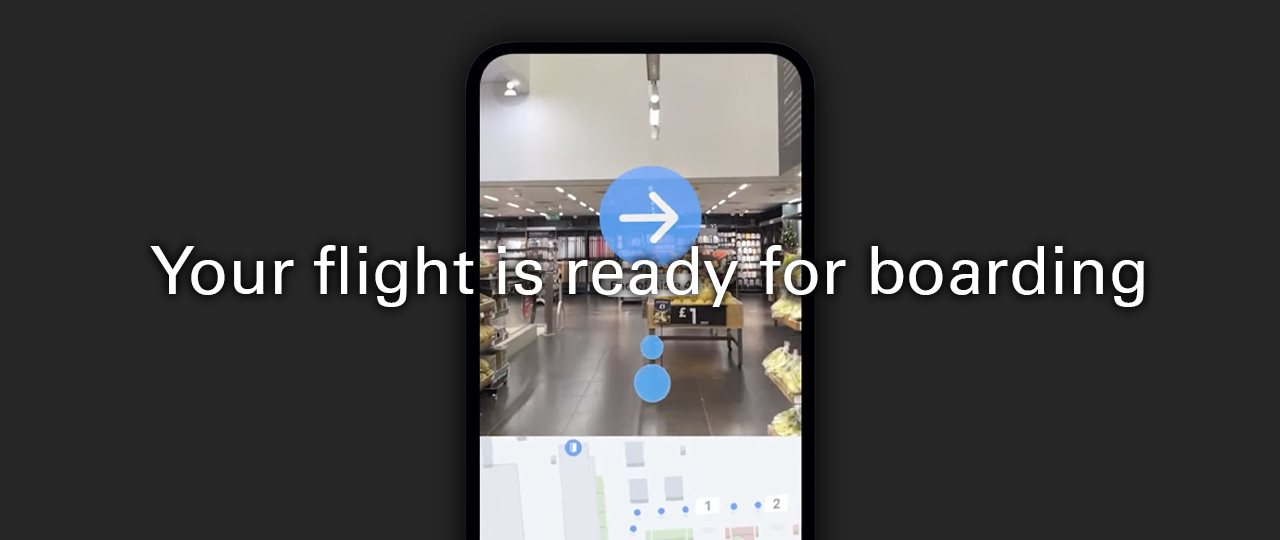Some time ago I was part of a workshop with architects, industrial designers, experience designers… to anticipate and re-imagine what a user experience would be like in 2025 in a brand’s physical location. At the pace technology is moving, in 2025 we will most likely live in a very different world in many ways. Most of which we cannot even predict yet. But there is one we can already anticipate for sure, at least partially. And that is the effect 5G will have on our way of interacting with our surroundings. I’m no engineer, but we already know 5G comes with 2 main changes: Higher speed, and greater latency.
And “latency” is the key word in this case, because that means any 5G device will be geolocated much more accurately. So how can 5G (and its greater latency) affect the user experience in a brand’s physical location? Well, my point was that, for example, we could possibly eliminate many of the signs that populate any public space: If you’re carrying a smartphone (and have granted access to some basic information about yourself), that means we will know exactly where you are, which one is your flight, as well as the gate, and when does it take off (hence when do we have to send you a “last call notification” depending on where you are), whether you have a car in the parking or you need an Uber when you arrive, and on and on… but also simple, basic things like if you’re looking for the man or woman’s toilet.
(in fact, just a few months ago, Zurich Airport implemented Google Maps Live View, so it seems I was heading in the right direction).
It might just be too early to remove all the direction signs, but maybe they can be much more discreet. Multiply that by dozens if not hundreds and there is an interesting change in the interior design and customer experience.
And since we’re at it, we also know how popular LED walls are becoming (and how much their prices are going down), so why should we have to choose the color of the walls 5 years ahead, when we can have LED walls with any color in the world and much more (animated graphics, customer-relevant information, emergency information, etc.). Just look at these 2 projects by Moment Factory, a brilliant multimedia studio for immersive environments.
Experiencia de usuario in 2025
Hace algún tiempo participe en un taller con arquitectos, diseñadores industriales, diseñadores de experiencia… para anticipar y re-imaginar cómo sería una experiencia de usuario en 2025 en la ubicación física de una marca. Al ritmo que avanza la tecnología, en 2025 lo más probable es que vivamos en un mundo muy diferente en muchos sentidos. La mayoría de los cuales ni siquiera podemos predecir todavía. Pero hay uno que ya podemos adelantar seguro, al menos parcialmente. Y es el efecto que tendrá el 5G en nuestra forma de interactuar con nuestro entorno. No soy ingeniero, pero ya sabemos que 5G viene con 2 cambios principales: mayor velocidad y mayor latencia.
Y “latencia” es la palabra clave en este caso, porque eso significa que cualquier dispositivo 5G estará geo-localizado con mucha más precisión. Entonces, ¿cómo puede el 5G (y su mayor latencia) afectar la experiencia del usuario en la ubicación física de una marca? Bueno, lo que pretendía resaltar era que, por ejemplo, posiblemente podríamos eliminar muchos de los letreros que pueblan cualquier espacio público: si un lleva un “smartphone” (y ha otorgado acceso a cierta información básica), eso significa que sabremos exactamente dónde estás, cuál es tu vuelo, así como la puerta de embarque y cuándo despega (por lo tanto, cuándo tenemos que enviarte una “notificación de última llamada” dependiendo de dónde te encuentres), si tienes un coche en el aparcamiento o necesitas un Uber cuando llegas, y así sucesivamente… pero también cosas simples y básicas como si estás buscando el baño de hombres o mujeres.
(de hecho, hace solo unos meses, el aeropuerto de Zúrich implementó Google Maps Live View, por lo que parece que no iba en la dirección equivocada).
Puede que sea demasiado pronto para eliminar todos los letreros de indicaciones, pero tal vez puedan ser mucho más discretos. Multiplica eso por docenas, si no centenas, y hay tenemos un cambio interesante en el diseño interior y la experiencia del usuario.
Y ya que estamos, también sabemos lo populares que se están volviendo las pantallas de LED (y cuánto están bajando sus precios), asi que ¿por qué deberíamos elegir hoy el color que tendrán las paredes dentro de 5 años, cuando podriamos usar paredes hechas con pantallas LED con cualquier color del mundo y mucho más? (gráficos animados, información relevante para el cliente, información de emergencia, etc.). Sólo hay que mirar los videos de los proyectos para el aeropuerto de Changi y el aeropuerto de Los Angeles que ha hecho Moment Factory, un brillante estudio multimedia para entornos inmersivos.


Leave a Reply